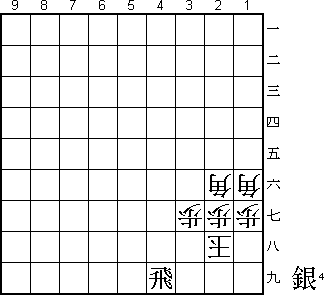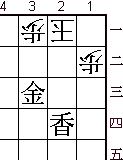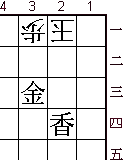| Q: | Can the Defender drop a third Bishop? |
| A: |
No. The Defender is considered to have in hand all pieces from the original set of 39
(40 minus Attacker's king) that are not shown on the board or in Attacker's hand.
This is sometimes part of the problem.
This amusing geometrical problem was composed by Hatasu Ito (7-dan). After the initial moves 1 S2i K1i 2 S3h, Defender could avoid mate if only he could drop a Bishop or Silver on 3i. Unfortunately (for him), both Bishops and all four Silvers are already accounted for... |


